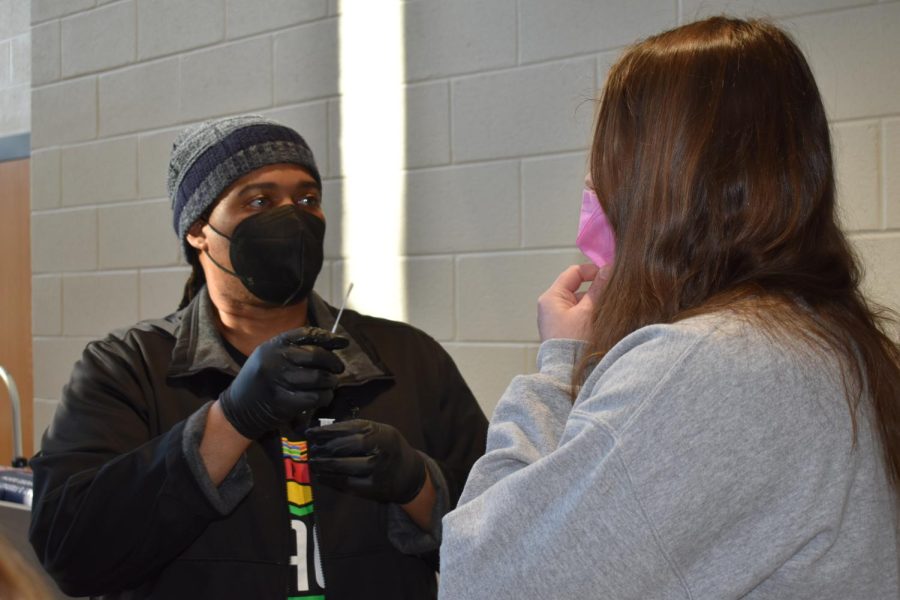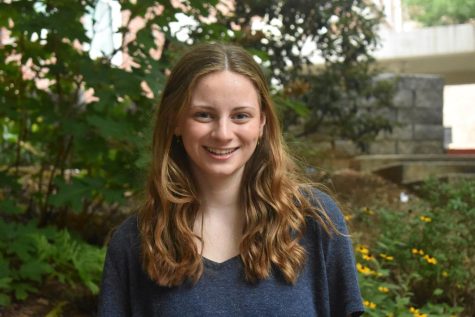School-wide surveillance testing in need of reform
Senior Hannah Doherty (right) participates in COVID-19 surveillance testing.
February 9, 2022
Atlanta Public Schools has recently instated twice-weekly COVID-19 surveillance testing. Teachers, staff and students who participate in athletics and extracurricular activities are required to participate in testing. For students who don’t participate in activities and athletics, testing is voluntary and only available with a parental consent form.
This optional testing is an extremely beneficial service provided by the district. Currently, COVID tests are hard to find, despite the importance of testing in mitigating the spread of the virus.
By this logic, supplying COVID tests to students and staff twice a week is a logical idea. If students and staff know they’re COVID-positive, it’s easier to self-isolate and not infect others. However, at Midtown, the current testing system is dysfunctional and could be improved.
The way students are called to COVID testing is through an announcement on the intercom, always during the 1B period on Tuesday and Friday. Students wait to hear the letter of their last name called in a block (ex. A-C) and go to the multipurpose room to wait in one of two lines (separated by under and upperclassmen) to be tested.
This process can take up to 20 minutes, as lines for testing often are extremely long. As this testing always occurs during 1B, students miss a great deal of instructional time in that specific period. As each class typically receives roughly 195 minutes of instructional time per week (two 75-minute periods and a 45-minute C-day period), students who get COVID-tested miss out on one-fifth of the instructional time of their 1B period every week.
If that period is an AP or lecture-based class, this missed time can be crippling and can disincentivize students to go get COVID-tested. To fix this issue, smaller blocks of students should be called to be tested, possibly even calling letters from one grade at a time, in order to lessen the wait for each individual student and the amount of class time missed. Students shouldn’t be academically penalized for ensuring the health of themselves and their community.
The process to receive results from testing is often haphazard and unorganized. If a student tests negative for COVID, they aren’t told of their testing result and assume they’re negative.
However, if a student tests positive, time windows for notification vary. Some students report not being told of their positive status until up to four hours after they tested, while others recall being pulled out of class quickly. A link has been recently made available for students to check their test results, but many students who get tested for COVID don’t know this platform exists at all.
The small number of students testing also makes testing not nearly as effective to keep the community healthy as it could be. During the week of Jan. 29 – Feb. 4, 6 students and staff members at Midtown tested positive. With only roughly 350 students showing up to test at Midtown out of our roughly 1,545 student population, this number must understate the true amount of COVID-19 within our school.
In order to ensure more students sign up to test and increase COVID testing’s efficacy, the consent form to sign up for testing must be more widely distributed. It’s currently being spread through school information sources, such as the Knightly News weekly newsletter, but many students still have no idea how to sign up for COVID testing. Mandating that all teachers put this link on their Schoology sites or put a QR code on the board in their classes will ensure that more students are getting tested and our school community is healthier.
By offering COVID-19 testing, APS took a step to ensure student and teacher safety. However, this testing could be doing more good in the Midtown community and district as a whole if the numerous flaws in the system are remedied. The spread can’t be truly stopped unless students are truly participating in testing and exposures are stopped as quickly as possible.







